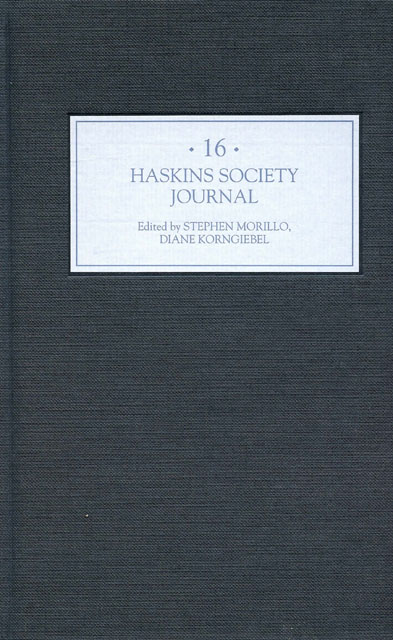Book contents
- Frontmatter
- Contents
- Editor’s Note
- Abbreviations
- 1 Hallucinations of Power: Climates of Fright in the Early Twelfth Century
- 2 Sites and Occasions of Peacemaking in England and Normandy, c. 900–c. 1150
- 3 Trans-border Transactions: Patterns of Patronage in Anglo-Norman Wales
- 4 Lay Piety, Confessional Directives and the Compiler’s Method in Late Anglo-Saxon England
- 5 Furor Teutonicus. A Note on Ethnic Stereotypes in Suger’s Deeds of Louis the Fat
- 6 Law and Theology in Gilbert of Foliot’s (c. 1105/10–1187/88) Correspondence
- 7 A Lost Law of Henry II: The Assize of Oxford and Monetary Reform
- 8 The Renaissance of the Twelfth Century Before Haskins
- 9 ‘Hobbes’, ‘Dogs’ and Politics in the Ireland of Lionel of Antwerp, c. 1361–6
7 - A Lost Law of Henry II: The Assize of Oxford and Monetary Reform
Published online by Cambridge University Press: 23 March 2023
- Frontmatter
- Contents
- Editor’s Note
- Abbreviations
- 1 Hallucinations of Power: Climates of Fright in the Early Twelfth Century
- 2 Sites and Occasions of Peacemaking in England and Normandy, c. 900–c. 1150
- 3 Trans-border Transactions: Patterns of Patronage in Anglo-Norman Wales
- 4 Lay Piety, Confessional Directives and the Compiler’s Method in Late Anglo-Saxon England
- 5 Furor Teutonicus. A Note on Ethnic Stereotypes in Suger’s Deeds of Louis the Fat
- 6 Law and Theology in Gilbert of Foliot’s (c. 1105/10–1187/88) Correspondence
- 7 A Lost Law of Henry II: The Assize of Oxford and Monetary Reform
- 8 The Renaissance of the Twelfth Century Before Haskins
- 9 ‘Hobbes’, ‘Dogs’ and Politics in the Ireland of Lionel of Antwerp, c. 1361–6
Summary
Late in the year 1180, Henry II enacted a reform of both the coinage and mint administration in England. Chronicle descriptions of this event are few and somewhat limited. Roger of Hoveden, for example, states: ‘Henry, king of England, the father, made a new coinage in England’ (1180). While this and other chroniclers’ statements help date when the new coinage was introduced they offer no details as to how the transfer from old to new coinage was managed and no hint that a large reform of the mint system accompanied the change. The sparse comments of chroniclers and the absence of any text of this assize may be why John Holt overlooked the legislation that introduced the monetary reform when he studied the assizes of Henry II's reign. This paper will demonstrate that such an assize was promulgated and will reconstruct the principal elements of the Assize of Oxford as they can be deduced from the surviving evidence. To properly understand the assize, however, it is necessary to offer a brief review of the history of the English coinage as it evolved out of the Anglo-Saxon mint system.
Dating back to the Anglo-Saxon king, Edgar, in 973, England enjoyed one of the strongest coinages and most sophisticated mint systems in Western Christendom. The mints regularly managed the complete reissuing of the coinage, and allowed the crown, which held a monopoly on coin production, to vary the weight of the coins from issue to issue to maximize its own profit. This trustworthy and profitable system began to break down after the Normans displaced the Anglo-Saxon crown in 1066. By the early twelfth century the English coinage was showing significant signs of distress. Henry I attempted to correct the problem by dramatically removing the vast majority of England's mint officials (called moneyers) from office and reportedly castrating them and then immobilizing the coinage for the last decade of his reign, surrendering the profits of regular renewal of the coinage in an effort to restore confidence in the penny. Whether or not Henry I's efforts would ultimately have succeeded will never be known, for upon his death England embarked upon twenty years of civil warfare. This period of anarchy was disastrous for the coinage. The royal monopoly to mint coins was lost. Royal profits from the mints were usurped. And confidence in the coinage continued to decline.
- Type
- Chapter
- Information
- The Haskins Society Journal2005. Studies in Medieval History, pp. 95 - 103Publisher: Boydell & BrewerPrint publication year: 2006



